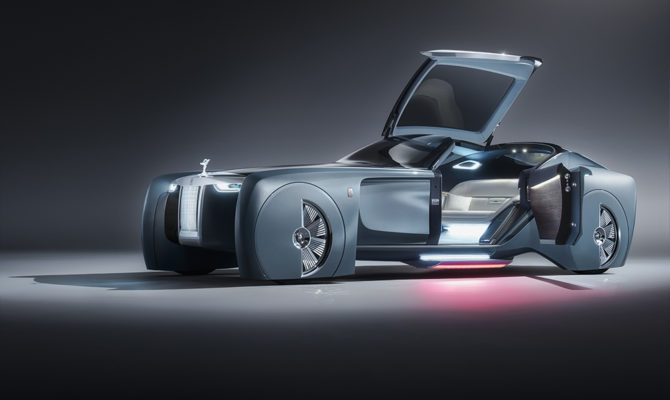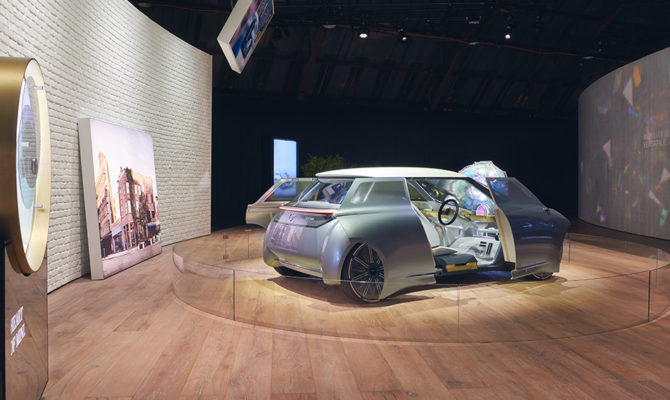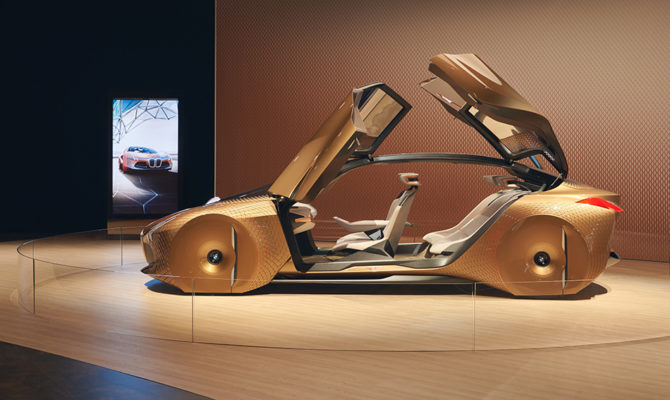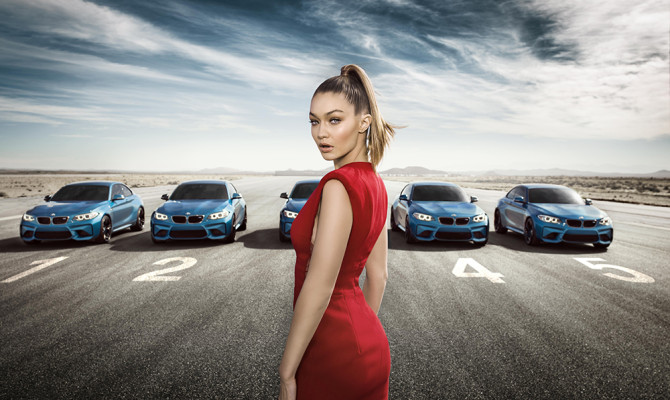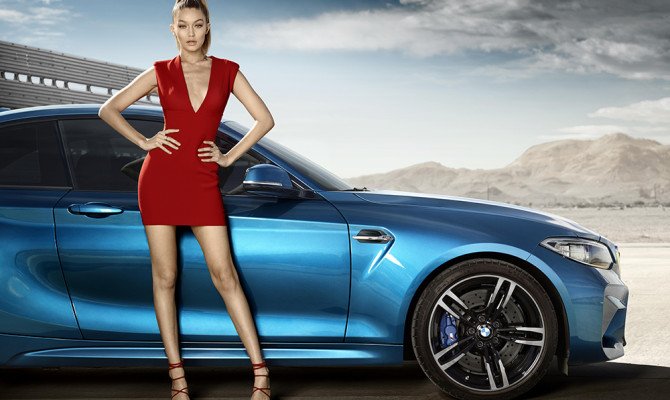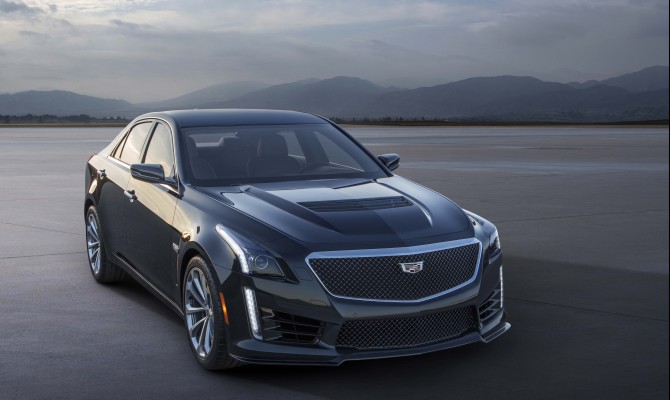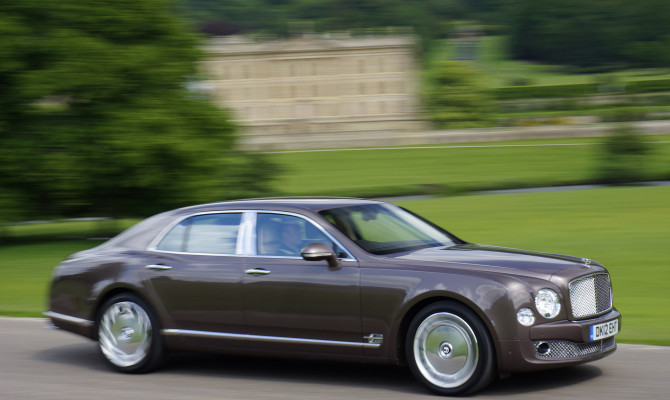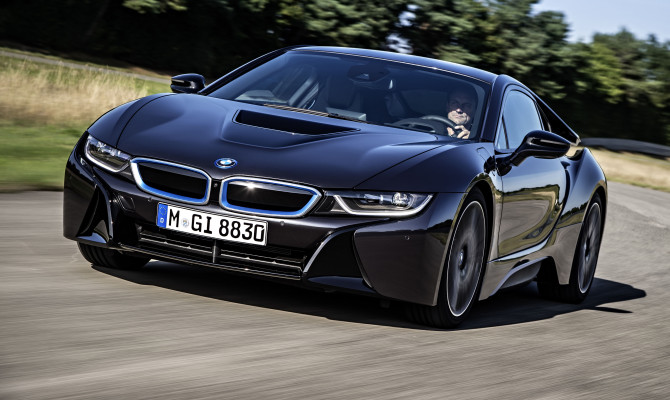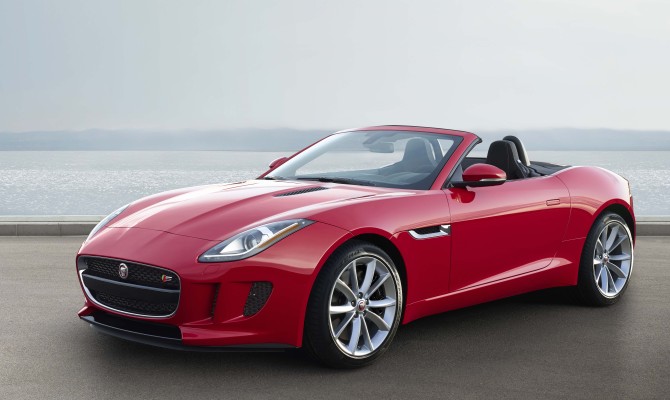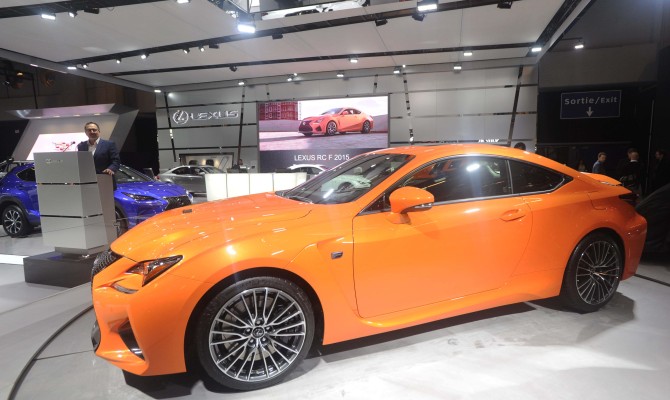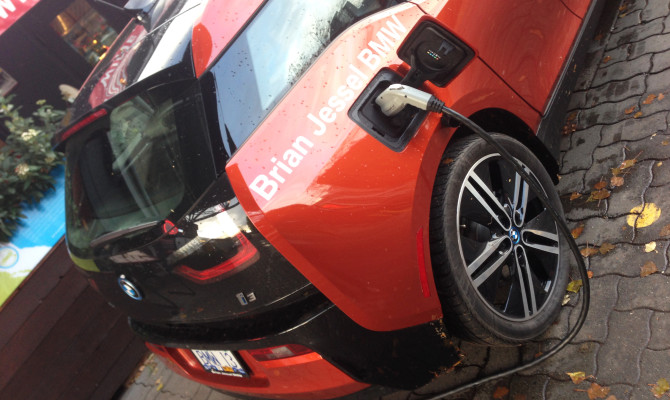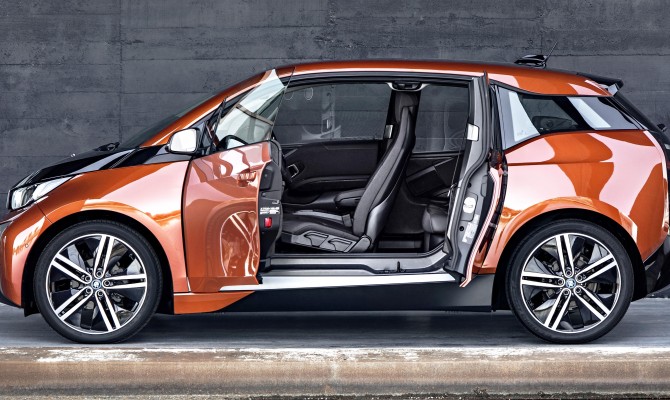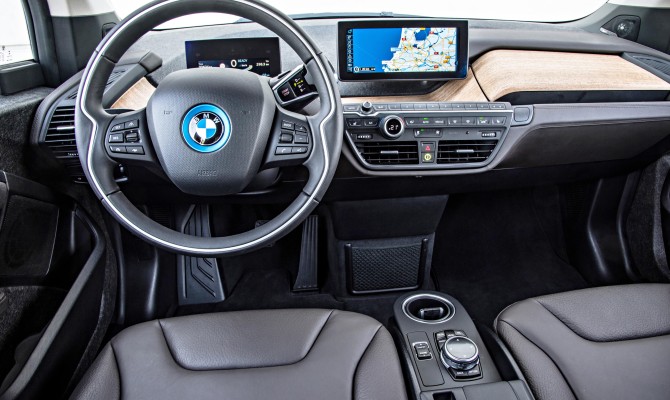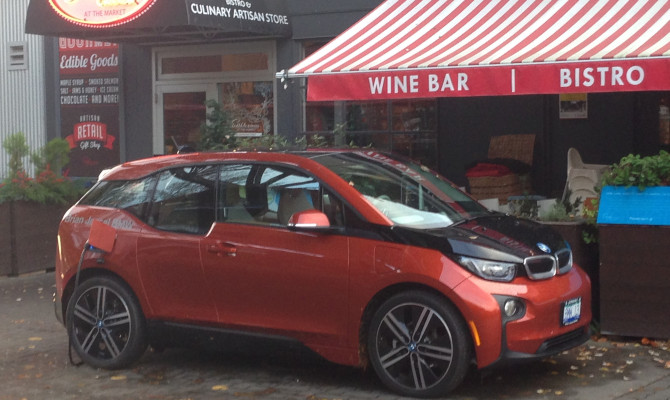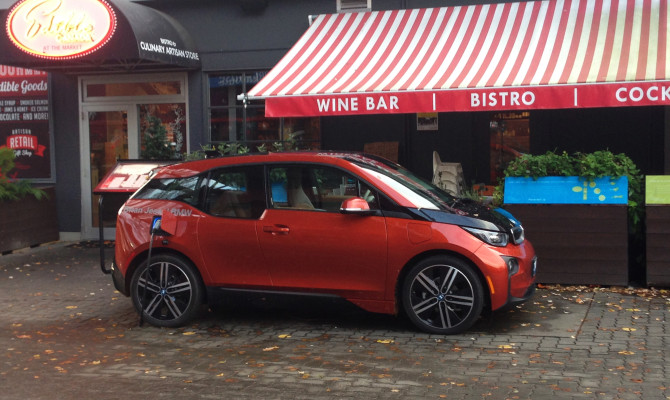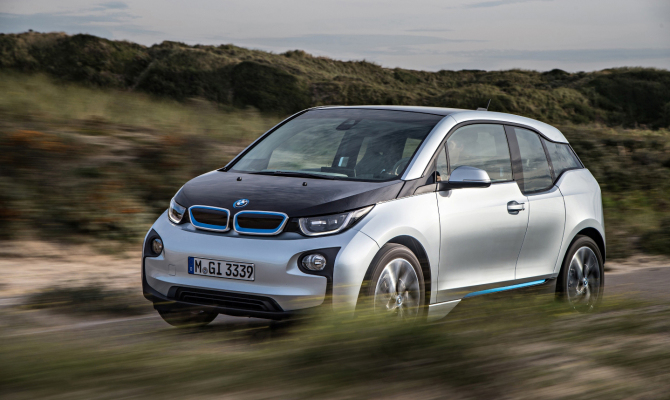“The Canadian International Auto Show media preview featured 41 “New to Canada” vehicle premieres and for the first time ever a “World Premiere”, which was video cast globally, of the 2018 Hyundai Accent.”
“Bowland covers almost 800 sq kms of fells, bogs, moorland, rushing streams and steep valleys”
BMW has just celebrated its first 100 years and now it’s offering a vision of its next century.
The German manufacturer has unveiled concept vehicles for each of its brands – BMW, MINI, and Rolls-Royce.
The BMW Group’s vision of the future products is based on imagining how people might live in the next century and how that will influence transportation needs. The concept cars explore a number of future themes, autonomous and emission-free driving, connectivity and mobility services.
“Our long-term corporate strategy focuses firmly on the customer and the experience of sustainable premium mobility,” said BMW AG’s Management Board Chairman, Harald Krüger. “We want to offer our customers the ultimate in emotional products and innovative services – today and in the future.”
Here’s what the brands’ brains have dreamed up”
The BMW Vision Vehicle reflects the belief that while drivers will allow the vehicle to operate autonomously when desired, they will retain the pleasure of hands-on-the-wheel performance.
The key idea behind the MINI vision concept is responsible use of resources for personal mobility. The motto “Every MINI is my MINI” is about innovative car-sharing, with MINI fans of the future able to access and tailor any MINI to their own personal preferences, anywhere and at any time.
The MINI will be available to everybody at all times, picking drivers up autonomously from wherever they like and adjusting its appearance, driving characteristics and connectivity to suit the user’s personal lifestyle.
The Rolls-Royce is fully autonomous and promises to take luxury to a new dimension. The interior will be a private retreat, a “Grand Sanctuary” in which a virtual assistant not only drives the vehicle but also fulfils the occupants’ every wish throughout the journey.
The exterior, with an elegant clamshell canopy and coach door, allows passengers simply to stand up and step out of the vehicle, ensuring they are the picture of refinement and taste wherever they arrive.
The BMW Motorrad Vision Vehicle is designed to create a pure, unbounded ride experience. In the future, the special sensation of freedom will be made possible by even greater connectivity between rider, bike and the outside world.
The assistance systems will not only anticipate and advise when action is needed but also intervene, when required, to keep riders safe. Protective clothing such as helmets and padded suits will no longer be needed. Instead, riders will simply be able to enjoy the sensation of absolute freedom.
A key assistance system in this Vision Vehicle is the Self-Balancing mechanism, which keeps the motorcycle balanced both while in motion and while stationary, and prevents it from tipping over.
BMW is featuring American supermodel Gigi Hadid in a marketing campaign to support the launch of the new M2 Coupe.
She appears in a short film called “Eyes on Gigi”, created by film producer and screenplay author Marc Forster, who directed films such as “James Bond – Quantum of Solace”, “Monster’s Ball” and “World War Z”.
The mini-movie has been posted first exclusively on YouTube and Facebook but will show up elsewhere as the campaign gathers momentum. It invites viewers to play a very different kind of “shell game”: The film starts with supermodel Gigi Hadid climbing into one of three parked BMW M2 Coupes; from then on, the viewer tries to keep track of Gigi and her BMW M2 Coupe.
Within a short space of time, two more BMW M2 Coupes join in and a fast-paced vehicle choreography begins – making the task virtually impossible.
At the end of the racy-pacey movie, the BMW M2 Coupes come to a halt and the viewer has to identify in which car Gigi Hadid is. The one-shot stunt – captured in a single uncut tracking shot – was filmed at an airfield in California’s Mojave Desert under the direction of Oscar-winning cameraman Mauro Fiore (“Avatar”, “The Equalizer”).
The interactive resolution of the game takes place on the campaign microsite EyesOnGigi.com, where the viewer can also follow the fast-paced vehicle choreography from a 360-degree perspective.
“Eyes on Gigi” is the first time the top model from Los Angeles has officially worked with an automobile brand.
Hadid remarked: “BMW is such an iconic brand. The fact that I get to be the face of this campaign is definitely a career highlight for me. The M2 is such a cool, fun car.”
The digital spot kicks off an integrated campaign for global rollout through TV, digital, social media and CRM channels. BMW hopes to benefit from Hadid’s strong social media presence. With 16.1 million subscribers on Instagram, nearly 1.9 million followers on Twitter and approximately 2.6 million fans on Facebook, Hadid is extremely successful in this area.
If the player picks the right BMW M2 Coupe, the campaign’s sophisticated digital architecture leads into the digital BMW M2 Coupe showroom of the BMW sales company in the player’s country.
The self-driving car is rapidly moving from concept to reality and fully autonomous cars will arrive sooner than you think.
(more…)
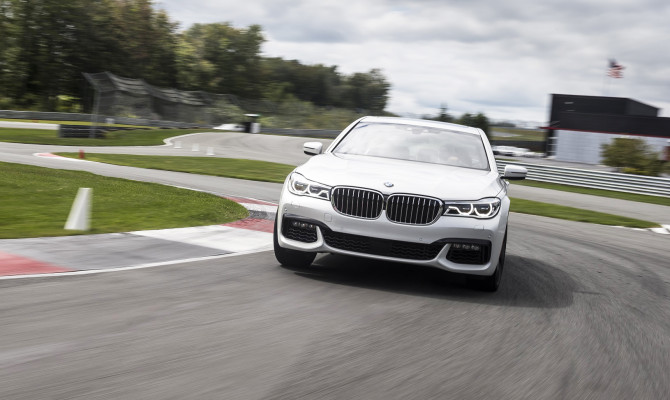
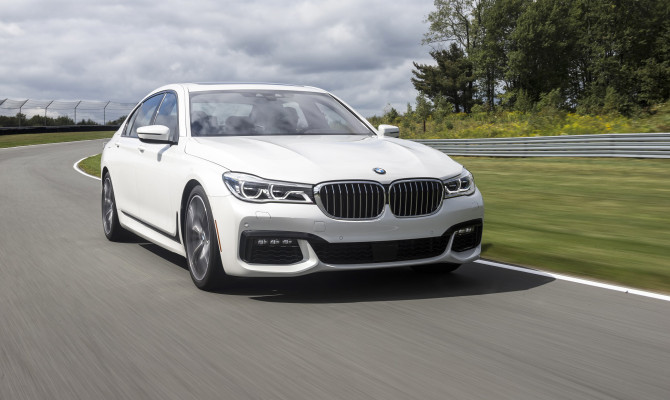
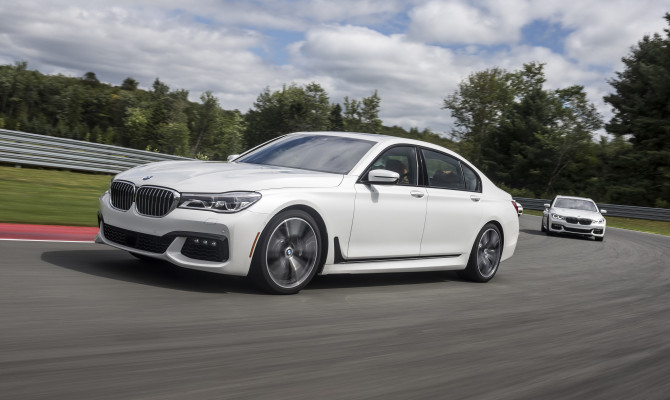
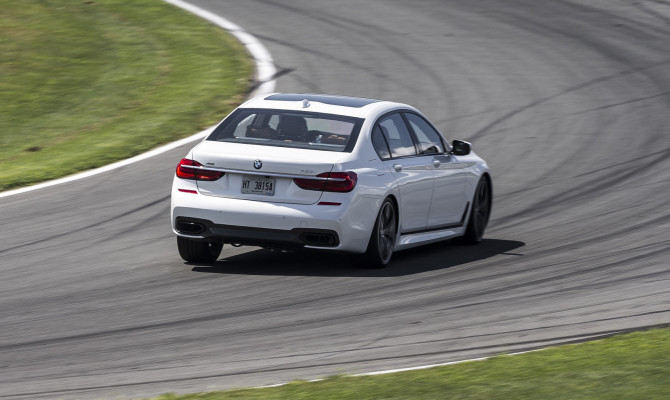
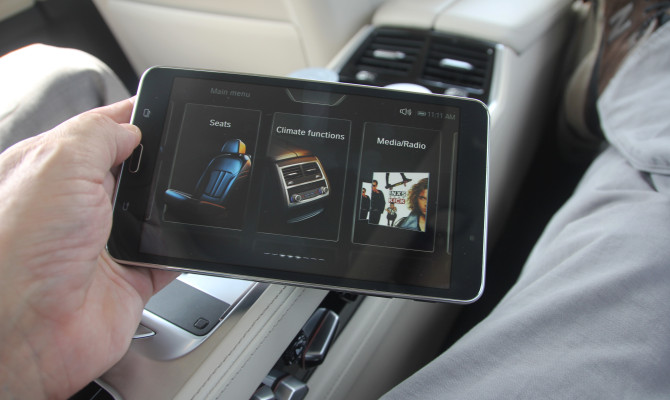
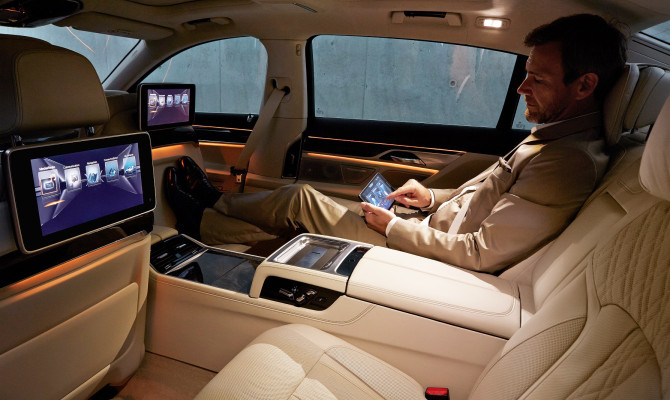
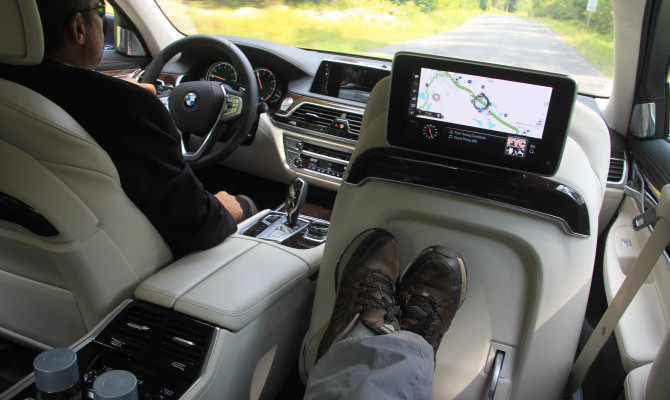

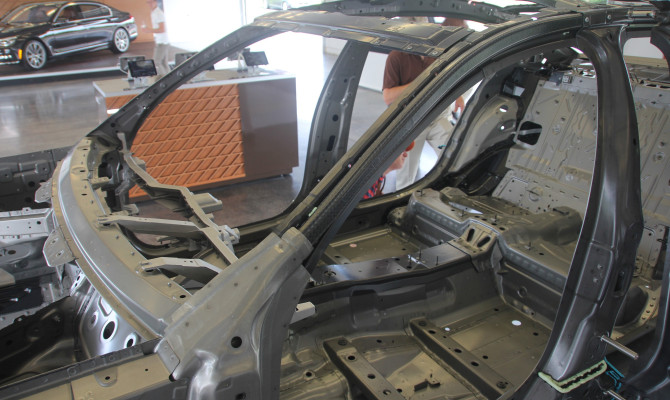
New York.
The all-new 2016 BMW 7 Series is a sixth generation edition of the brand’s big, flagship sedan.
The new styling is another evolutionary step and still instantly recognizable as a BMW. Dimensionally this car is the same as the outgoing model, yet it has a radically new and innovative sub-structure.
And the latter, coupled with remarkable onboard technology, is what caught my attention. Today, much is unique to the 7 series but, figuratively speaking, tomorrow it will spread through the range and the day after it will doubtless be coming to a car near you!
The new 7 Series, offers a showcase of the very latest technologies that BMW has to offer, combined with more advanced forms of technologies already available. Sadly, a novel driverless “self-parking” technology (controlled by the key fob and available in Europe) has not (yet) received Canadian regulatory approval. A similar (delayed approval) story also applies to a new adaptive LED headlight option.
Another fascinating new (multi-media) feature is Gesture Control, which lets an operator do things like raise audio volume by twirling your finger, take a phone call with a finger point or wave it away with a wrist flick. An operator can also add customized gestures to trigger a function… a couple come to mind!
Pandering to the non-driving owners is an interesting optional interior first for BMW, a feature called “Executive Lounge”. A feet-up recliner in the right rear seat has a body massage feature and a multi-media experience controlled by a removable touch-screen tablet, which is mounted in a clever docking feature. Got to admit, it was rear seat test drive to savour – and yes, I do love this job!
BMW is pioneering a different way to improve body rigidity and reduce weight, explained Dr. Wolfgang Hundt, the Project Manager for Driving Dynamics & Driving Assistance. It uses carbon-fibre (reinforced plastic) in key (core) locations of the structure of the new 7 Series. An indicator of how strongly committed BMW is to the use of this ultra-light yet super-strong material is the expansion work (to triple production output) already in progress at its relatively new Moses Lake (Washington State) carbon-fibre manufacturing plant.
I was most impressed by the balance and poise of the 750i xDrive (with an M-Sport package) on the Monticello Motor Club, in up-state New York. In Sport mode the new 7 is so wonderfully light on its feet that you can very easily forget you’re behind the wheel of a big sedan. This mode drops the standard air suspension an additional 10mm and it seems to firm-up and tighten everything. The difference between Sport and Comfort modes was quite dramatic and there’s a new one “Adaptive”. It matches the vehicle set-up to the driver’s current driving style and a profile of the route ahead, by talking to the navigation system.
A redesigned optional Integral Active Steering system can now be offered in conjunction with the xDrive all-wheel drive system. It can turn the rear wheels in the same or an opposing direction as the front wheels to increase manoeuvrability in urban traffic and agility at highway speeds.
The extremely rigid body structure is a ground-breaking marriage of steel, aluminum and carbon-fibre (core) members. The end result is a 7 Series with a much lower centre of gravity and close to perfect front/rear weight distribution.
The 750i xDrive and 750Li xDrive editions will soon be arriving in Canadian BMW dealer showrooms. A BMW 750i xDrive model will have a starting MSRP of $113,900, and a long-wheelbase 750iL xDrive at $117,900. Pricing, which should be lower, for the 740 editions will be announced closer to market launch next year.
A redesigned 4.4 litre V 8 engine with TwinPower Turbo technology can produce 445 hp and rocket a 750i to 100 km/h in 4.5 seconds (according to BMW). It’s teamed with an eight-speed automatic and a new version of BMW’s intelligent all-wheel-drive system in the 750i xDrive.
BMW’s venerable 3.0-litre inline 6-cylinder engine, which now also features TwinPower Turbo technology, will power 740i xDrive and 740Li xDrive editions. A plug-in hybrid 740e xDrive will also join the model lineup in 2016. Its 2.0-litre gas engine is paired with electric drive unit that’s integrated into the eight-speed Steptronic transmission and it comes with a lithium-ion battery pack.
“Approaching the track, traffic slowed and for the first time I had time to admire the beautifully stitched leather interior and controls layout…” (more…)
“There are cars on show for the rich and cars for the super-rich; neither status describes me but it won’t stop me looking.”
You can dream about luxury cars and even touch them at the Vancouver auto show.
2016 Cadillac CTS-V
The new CTS-V is the pinnacle of Cadillac’s renaissance, repositioning itself as a high-performance luxury brand able to compete with the likes of BMW and Audi for the well-heeled 40-something power broker. This 200 mph 4-door sedan houses a Corvette engine, but not just any Vette V8. The 2016 CTS-V is infused with the supercharged 6.2L V8 power plant engineered for the formidable 2015 Corvette Zo6. It eagerly dispenses 640 horsepower and 630 lb.-ft. of torque to the V’s rear wheels through an 8-speed automatic transmission featuring shift paddles. Pulling the CTS-V rapidly down from 200 mph is a set of Brembo cast iron disc brakes, which are more effective at shedding heat than carbon-ceramic setups. No firm price yet.
2016 Lexus RC F
The all-new track ready 2015 Lexus RC F adopts the best of the tuning and technology that went into the Lexus LFA Supercar to create an authentic high-performance coupe. Fully capable of running on a racing circuit and featuring the most powerful Lexus production engine to date – s 467 horsepower 5.0L V8. The Lexus RC F is for those ready to immerse themselves in pure driving pleasure. Available in two models starting from $81,650.
Jaguar F-TYPE Convertible
It’s hard to argue with Jaguar’s description of the F-TYPE as being pulse-quickening. It combines effortless, exhilarating performance, instant response and precise, agile handling with everyday refinement and usability.
The Jaguar supercharged 3.0 litre V6 340 hp engine delivers powerful and efficient performance. Select from a rich variety of colour combinations for body and cockpit. Acceleration is clocked at 0-100 km/h 5.3 seconds, with a top speed of 260 km/h. Priced from $76,900
Bentley Mulsanne
The Mulsanne is the flagship of this esteemed British marque.
It’s simply sumptuous inside, thanks to the use of finely handcrafted materials and painstaking attention to fit and finish. The dashboard is measured to accommodate the thickness of leather that wraps around it precisely. The infotainment screen it surrounds, meanwhile, can be concealed behind a veneered panel when not required for route navigation, rear camera view or other control functions.
The Mulsanne includes a 14-speaker sound system with Digital Signal Processing (DSP). Audio perfectionists have the option to go even further: the Naim™ for Bentley system comprises 20 speakers, 22 channels and 2200 watts of aural perfection.
Under the hood is a re-calibrated 6.7-litre V8 engine, which generates 505 horsepower and takes the luxury car to 100 km/h in a time that matches the lithe Jag F-TYPE.
Expect to pay at least $480,000.
BMW i8
The BMW i8 is a sports car with the fuel efficiency of a micro-car!
This is possible because the powerful plug-in hybrid system with the combination of BMW eDrive technology and a BMW TwinPower Turbo 1.5-litre, 3-cylinder gasoline engine brings together the benefits of an electric motor and a gasoline engine to produce an outstanding driving experience.
And its efficiency is powerfully aided by the carbon-fibre car’s sleek design. The front appears extremely low and wide and everything is arranged to be optimally aerodynamic.
There are cars on show for the rich and cars for the super-rich; neither status describes me but it won’t stop me looking.
Contact: rrothwell [at] drivewaybc [dot] ca
“In town, the BMWi3 is the perfect shopping cart, extremely manoeuvrable and the fastest parker in town!”
It is suggested that imitation is the sincerest form of flattery though it’s doubtful that belief is enthusiastically shared by folks in the fiercely competitive auto business.
Nevertheless, to quote another common saying, all is fair in love and war. So, prepare to see clones or lookalikes of the all-electric, BMW i3 emerging from the production lines of major manufacturers in the next few years.
In Detroit recently, my head spun when I clapped eyes on Chevy’s all-electric Bolt, even its rusty colour was similar to the i3 I drove at the launch in Amsterdam in 2013. As I remarked at that time, the compact eco-Bimmer has a funky look and its one that’s gaining traction especially among the younger generation.
My head spun again the other week when I picked up a production version to test in local conditions from Brian Jessel BMW in Vancouver. It was identical to the Dutch example! Well, not quite. It did have an additional feature not present in the launch model. It had a range extender, which is marketing-speak for a two-cylinder, 647cc gas engine. It doesn’t drive the wheels but kicks in as an electricity generator designed to top up the battery when it runs low.
It’s a must addition for Canada unless your daily trek clocks up no more than the promised 130-160 kilometres range when setting out with a fully-charged battery or you don’t have access during the day to the charging stations now springing up in many urban core parking lots.
Based on my Dutch experience and a few days buzzing around the Fraser Valley, the top end is a shade optimistic, especially in poor weather when one tends to crank up the heat. Mind you, with a starting price just short of $45,000 the $4,000 generator pushes that already substantial cost up significantly. The nine-litre gas tank that feeds the tiny engine boosts the range to around 300 kilometres.
What is indisputable is just how much fun this car is to drive. In town, the BMWi3 is the perfect shopping cart, extremely manoeuvrable and the fastest parker in town! The lithium-ion battery, housed in an aluminum cage below the five-seater cabin, enables the electric motor to mimic a race car at the green and back into a tight spot equally quickly!
You think I jest? After seven seconds of acceleration, the display shows 100 km/h. The need to pass fast on the freeway is also easily achievable with a five-second count between 80 and 120 km/h.
Drive like that all day and the gas engine will be firing up in no time but the power is there if you need it. Drive sensibly and to the prevailing weather conditions and you will get close to the advertised range. Sticking to the sluggish EcoPro and EcoPro+ modes will add 20 and 40 km to the range. Nah.
But it’s not just about operator proficiency: The carbon-fibre body is light and regenerative braking constantly tops up the cells. Using a regular domestic power point, I was able to recharge the i3 overnight and if you install a fast charger, you can be back on the road in three hours.
Interestingly, the BMW Group has partnered with the live transit information service Moovit (IOS and Android apps available). The app is an interactive service that informs the user about local transit options once you have parked up and plugged in the i3. Crowd sourced information also tells you which forms of transport are full and where there are delays. You can take advantage of this fabulous app without the need to shell out for an i3!
“Customers may not have asked for an aluminum body, instead of steel, but there’s solid reasoning behind this change…”
Steel is out and aluminum is the new lightweight “in” material for auto body panels.
Hang on a minute, maybe it’s Carbon Fibre-Reinforced Plastic? These two materials, plus a very different type of hybrid, are entries for the 2015 AJAC Best New Innovative Auto Technology Award.
Ford – F150 Aluminum Body
“If I had asked people what they wanted, they would have said faster horses,” is a quote attributed to Henry Ford, founder of the Ford Motor Company.
The Ford F150 has been the best-selling in truck sold in Canada for the last four years. Customers may not have asked for an aluminum body, instead of steel, but there’s solid reasoning behind this change.
Aluminum reduces body weight by 40-to-50 per cent. It’s more resistant to corrosion issues and it’s 100 per cent recyclable. In addition to fuel efficiency benefits, a lighter vehicle also has positive influences on braking, handling, ride and acceleration.
A special heat treatment, developed by Ford, nearly doubles (compared to steel) the strength of the military grade aluminum (magnesium) alloy body panels used in the new F150, making them more resistant to dents. Much of the raw aluminum also comes from Canada, as does a good portion of the secondary processing.
Ford’s experience with aluminum body parts actually goes all the way back to the 1915 Model T. In 2009 it secretly built an aluminum body F150, for test purposes, and Ford engineers have also been able to draw from experience in developing current production vehicles such as the all-aluminum body Jaguar XJ.
BMW Carbon Fibre-Reinforced Plastic
The BMW i3 and i8 are two new all-electric vehicles with ultra-light-weight bodies made from Carbon Fibre-Reinforced Plastic (CFRP). It’s a man-made material that’s extremely strong and it’s about 30 per cent lighter than aluminum. This is the first time that the entire body of a production car has been made with a carbon fiber compound.
CFRP is a composite material consisting of carbon fiber surrounded by a plastic matrix (resin). It’s completely resistant to corrosion and is expected to have a substantially longer useful life than metal. It also remains stable under all climatic conditions, according to BMW, even when it’s exposed to large temperature fluctuations.
Carbon Fiber is not a new material to auto racing enthusiasts, where its exceptional strength and light weight make if an ideal body material. CFRP has also been used to make trunk lids, roofs and even drive-shafts in the sporty M Series models by BMW. The main drawback to using carbon fiber in mainstream production vehicles, however, has been its cost, which brings up a Pacific Northwest connection,
All of the carbon fiber use in i3 and i8 comes from a new production plant in Moses Lake, Washington State. In fact, BMW has plans to triple capacity in Moses Lake and make it the world’s largest carbon fiber production plant. More and more BMW models are expected to include components made with CFRP and large-scale production is expected to reduce unit costs.
Honda/Acura – Sport Hybrid SH-AWD
The hybrid edition of the new Acura RLX includes the first-ever electronic (torque vectoring) Super Handling All-Wheel Drive (SH-AWD) system used in a production hybrid vehicle. This RLX is also the most powerful Acura production model ever built. Combined peak output is 377 horsepower and peak torque to the front wheels is 273 lb-ft at 4,700 rpm. Yet, its fuel consumption is incredibly low, at just 8.0/ 7.5/ 7.7 L/100km (city/highway/combined).
The hybrid powertrain includes three electric motors, one up front and two in the rear, and they all provide both power assist and regenerative charge to a battery pack. The gas engine is a 3.5-litre, 310-horsepower V6 with Variable Cylinder Management that’s linked with the 7-speed dual-clutch transmission.
Acura’s super-handling all-wheel-drive uses “torque vectoring” to create a yaw moment that helps the RLX turn effortlessly. It functions like an enhanced differential that sends more power to the outside rear wheel during cornering. And, like magic, you’re a much better and smoother driver. The RLX’s sophisticated hybrid system can also allows it run strictly on battery power with the rear motors driving the vehicle.
The 2015 AJAC Best New Auto Safety Technology Award will be announced at the Montreal Auto Show on January 15, 2015.
Recent Comments
- { Enjoyed your Forest of Bowland in the BMW X5M, particularly the photo of the BMW in front of the main part of Stonyhurst College where... }
- { Bantam designed the Jeep, not Willy's or Ford. The American military gave the original Bantam prototype to Willys and Ford to copy. There is plenty... }
- { All Escalades come with a 6.2-lilter V8 engine that produces 420 horsepower. A six-speed automatic is the only transmission offered and drives the rear wheels.... }
- { Alexandra is an excellent journalist. }
Popular Posts
- Journey to a ‘Sparkling’ Luxury Okanagan Resort “Four lucky readers will put a Dodge Journey’s weekend-...
- The Need For Speed: Hike Those Highway Limits More than half of those polled believe the province sho...
- Drives-U-Crazy… Erratic drivers. An early morning drive from Kelowna to Vancouver is nor...
- Readers Respond: The Pros and Cons of Increasing B.C. Speed Limits Increasing the speed limits will only increase risk to...
- Honda CR-V Review: The Compact Crossover To Get Things Done The CRV is a very stylish and aerodynamic crossover veh...


